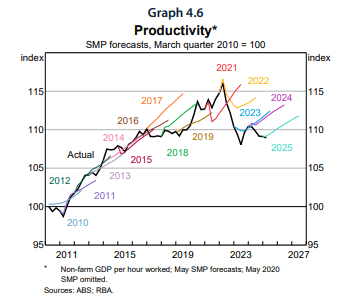MNI RBA WATCH: Bullock Points Toward Further Cuts

Reserve Bank of Australia Governor Michele Bullock signalled further easing ahead after Tuesday’s Board decision to cut the cash rate by 25 basis points to 3.6%, noting policymakers will be guided by incoming data at each meeting.
“I wouldn't say, one way or the other, that we won't be having back-to-back cuts,” Bullock told reporters after the largely-anticipated move. (See MNI RBA WATCH: Board Set To Cut As CPI, Labour Ease) “What we'll be doing is looking at the data that comes out before each meeting … and judging whether or not we think that we are broadly still on track.”
The reduction takes the cash rate to its lowest since 2023 and follows July’s surprise pause. (See MNI RBA WATCH: Board Shocks With Hold As Trade Fears Ease) Market reaction was muted, with pricing still showing at least one more cut by year-end and a 3% rate by Q1.
RATES LOWER
Pushing back on criticism that the Board erred in July by holding steady at 3.85%, Bullock repeated that the Reserve’s economic outlook, published alongside Tuesday’s decision, was predicated on further cuts. “If we held the interest rate where it is and didn't cut any more, then … we would expect to downgrade employment and inflation – lower inflation, higher unemployment,” she said.
Bullock declined to give a firm view on the neutral rate, saying the RBA’s broad 1-4% estimate was “too wide to be useful.” Instead, the Bank will focus on actual outcomes for inflation and employment to judge the stance of policy, combining backward-looking labour and price data with forward-looking surveys and business liaison, she said, while noting the volatility of monthly figures.
PRODUCTIVITY RE-EVALUATION
Questions at the press conference were dominated by Australia’s weak productivity growth, the subject of an upcoming federal government roundtable and the focus of a downgrade in the RBA’s August Statement on Monetary Policy. The Bank, which has been criticised for its overly optimistic view, cut its productivity forecast by 60bp to a 0.3% gain by December. (See chart)

Bullock acknowledged the RBA had been too optimistic, saying forecasts were based on assumptions rather than model-driven estimates. “One of the reasons we've come to this position is that our forecasts were such that we were hitting our employment and our inflation forecasts, but we were overestimating our GDP and our consumption forecasts,” she said, adding that unit labour costs remain a key indicator for inflation.
Despite the productivity downgrade, forecasts for inflation and a 4.3% peak in unemployment were little changed from May. Bullock said the Board still sees the labour market as “a bit tight,” though internal and external views differ as to whether it is at full employment.
“There's some disagreement… The Board's assessment is it's still a bit tight. Whether or not it's at full employment… I think we might be getting close to that,” she said.